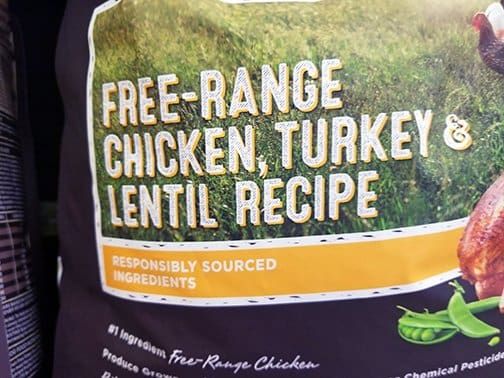Whole Dog Journal‘s review of dry dog food appears in the February issue, every year. And, every February, we try to share new information with WDJ’s readers about how to differentiate between dry dog foods of varying quality, and how to go about selecting the best foods for their dogs. Some of our readers have been with us for a long time; we don’t want to repeat the same information year after year, but strive to share information that is new and interesting, even to people who know a LOT about canine nutrition. But neither do we want to “lose” dog owners who are new to the publication by assuming a level of knowledge of the pet food industry that they don’t yet have.

In the February 2018 dry food review, now available to paid subscribers online and in print form, the emphasis is on the cost of quality: what you are paying for with the highest-priced foods, especially as compared to the moderately priced and low-priced foods. To that end, we arranged the list of “approved dry foods” by the average price per pound of each company’s products (instead of the usual list of products arranged in alphabetical order of the name of the product lines). We thought it might be interesting for you to see what products are similarly priced, which are the most expensive, and which of our approved foods are the least expensive.
The emphasis of the February 2017 dry food review (and the October 2016 canned food review) was the significance of a pet food company’s ability or inability to provide consumers with a complete nutrient analysis of their products upon request. As we explained in those reviews, pet food labels are required by law to include the minimum amounts of crude protein and crude fat, and maximum amounts of moisture and fiber that they contain.
However, the labels need not include information about all the other essential nutrients the foods are required to contain in order to be labeled as “complete and balanced.” Instead, the pet food companies need only fill out and sign an affidavit stating that, “This product meets the nutrient levels established in the AAFCO Dog Food Nutrient Profiles for (growth/reproduction, maintenance, or all life stages).” We suggested that, when trying to identify the “best of the best” pet food companies, dog owners should contact their favorite dog food makers and ask them for the complete nutrient analyses of their products, showing that they actually do meet those AAFCO Nutrient Profiles.

In the above-referenced reviews, we asked all of the companies who have had foods on our “approved foods” lists to provide us with these analyses. Some companies readily provided us with that information, and we designated their products as “Gold Star” foods in those reviews. Other companies provided us with computer-generated analyses of the nutrient levels that are expected in their finished foods. That’s something, but a little less than proof positive that those nutrient levels are, in fact, in line with the AAFCO Dog Food Nutrient Profiles. Those companies also appeared on the “approved foods” lists, but without the “Gold Star” designation.
Companies that provided us with no documentation regarding the nutrient levels in their products were omitted from our “approved foods” lists in those issues.
Some of our readers might be surprised to see that we did not repeat this exercise in our most recent canned food review (November 2017) or dry food review. While we still strongly recommend that consumers call or email the pet food companies that they are most interested in (or whose products they feed to their dogs) and ask for complete nutrient analyses for those foods, in these most recent reviews, we didn’t attempt to gather this information for the hundreds of products made by the dozens of companies who are represented on our lists. The job is simply bigger than we can replicate every year.
For one thing, reaching the appropriate live human who may (or may not) respond to such a request at each of the companies is a massive chore in itself. Tabulating the responses, and following up to make sure that the ones who did not respond actually did receive the request and are simply choosing not to respond is another massive job.
It was even more work to scrutinize the responses to see whether the material that each company sent was actually what we asked for – results from a laboratory test of the food to make sure that it actually contained the nutrients it was supposed to contain, and that meet the AAFCO dog food nutrient profiles. As opposed to a computer-generated analysis of each food’s expected nutrient content, based on its formula.
This is the reason that our 2018 “approved dry food” list has been repopulated with a few companies that did not appear on our 2017 list. We want to be clear: All of these companies offer products that meet all of our regular selection criteria. We still encourage you to contact the companies and ask for the complete nutrient analyses for the foods you feed your dogs – and we promise that it will be an interesting exercise for you!
Perhaps this is something we can crowd-source? In fact, we’d love it if, in the comments below, you would share the response you got when you called the toll-free number for the company that makes your dog’s food and asked for this information.






